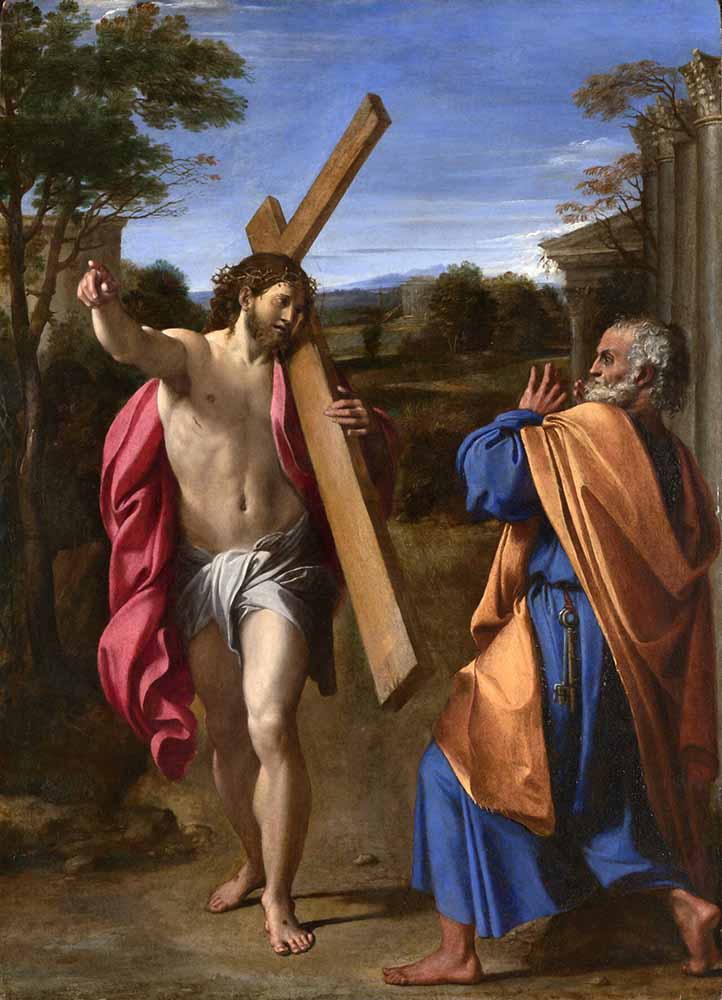There is a legend in Christian tradition that recounts a story in the apocryphal Acts of Peter. According to the legend, as Peter was fleeing crucifixion in Rome, he encountered the resurrected Jesus on the Appian Way just outside the city. Perplexed that Jesus was walking toward Rome, he asked, according to the Latin text, “Quo vadis, Domine?” (“Where are you going, Lord?”). Jesus responds, “Romam eo iterum crucifigi” (“I am going to Rome to be crucified again”). Peter considers this with some sorrow and embarrassment, perhaps deepened by the memory of his earlier denial of his Lord. He then musters the bravery and conviction to turn around and return to Rome to resume his ministry, where he ultimately meets his fate by being crucified upside-down. Keep in mind this is a legend, not Gospel. It comes from an apocryphal text that may not be authentic, so the event it recounts may or may not have happened. But it’s a great story and teaches an important lesson.
This story fits into a theme of today’s Mass readings, where we are reminded that it can be challenging to live in this world as followers of Christ and believers in the one true God. Sometimes we flee social crucifixion. At times, we are thrown in a sort of prison (or, in some cases, in an actual prison) for professing belief in Jesus Christ and proclaiming tenets or principles of the Gospel.
“Then Jesus said to his disciples, “Whoever wishes to come after me must deny himself, take up his cross, and follow me.”
You can’t follow someone if you’re leading them. Recall his admonition of Peter, “Get behind me, satan.” And you can’t imitate someone if you’re acting on your own. Jesus reminds us to follow him with faith that He always goes before us. With him before us, who or what should we fear? With Jesus as the model for living a holy life, how can we stray from the path of perfection so clearly laid out for us?
“For whoever wishes to save his life will lose it, but whoever loses his life for my sake will find it.”
Jesus is not being literal about taking up our crosses. It’s a reference to the struggles and “crucifixions” of those who believe in him. But on another level, it’s also a guideline for changing who we are, not merely changing how we are. Whoever loses his life—that is, his sinful nature, his identity as a child of the world—gains his life by actualizing his excellence and becoming who God created him to be.
It isn’t easy and it isn’t always a happy stroll. Sometimes we need to ask ourselves, “Ubi sum ego vado?”—where am I going? We have to ask if we’re going the right way and if we are oriented toward the right destination. What we shouldn’t ask is, “Is this the easy path?”



